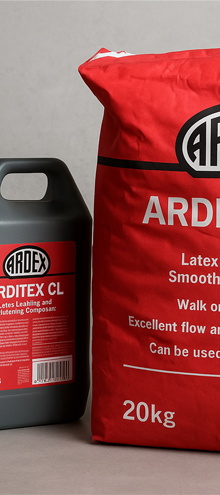Summer is long gone, and as temperatures begin to drop, more people will be considering putting their heating on for the first time in months. As a result, energy bills will rise, but depending on the city the home is located in, some people could be paying more than others.
This is due to the average energy performance certificate (EPC) score fluctuating in different cities around the UK – meaning more homes are better insulated – reducing the amount of heating needed throughout the colder seasons.
Therefore, we at Flooring King analysed the average EPC scores and temperatures across UK cities to identify which areas are expected to face the highest and lowest energy costs this winter.
We developed a ranking system, with higher scores indicating regions where households are likely to pay more in energy bills during the colder months.
UK Cities with the Highest Predicted Energy Costs
| City | Avg EPC rating | Avg winter temperature (degrees Celsius) | Total score |
| Bradford, West Yorkshire | 63 | 7 | 97 |
| Derby, Derbyshire | 66 | 7 | 80 |
| Brighton & Hove, East Sussex | 67 | 7 | 75 |
| St Albans, Hertfordshire | 67 | 7 | 75 |
| Lancaster, Lancashire | 65 | 8 | 74 |
| Birmingham, West Midlands | 66 | 7.7 | 72 |
| Leicester, East Midlands | 66 | 7.7 | 72 |
| Coventry, West Midlands | 67 | 7.3 | 72 |
| Lincoln, Lincolnshire | 68 | 7 | 70 |
| Winchester, Hampshire | 68 | 7 | 70 |
| Canterbury, Kent | 68 | 7 | 70 |
| Worcester, West Midlands | 68 | 7 | 70 |
| Durham, County Durham | 68 | 7 | 70 |
| Stoke-on-Trent, Staffordshire | 69 | 6.7 | 68 |
| Glasgow, Glasgow City | 69 | 6.7 | 68 |
- Bradford, West Yorkshire
In first place, with a score of 97, Bradford is the UK city expected to pay the most in energy bills this winter. This is due to a poor EPC rating of 63, well below all other examined cities. Additionally, the average winter temperature in Bradford is 7 degrees Celsius, meaning homes will need to have the heating on throughout the winter months.
This poor EPC rating could be due to many factors, including old properties with outdated insulation facilities. Boilers, windows, and doors could also impact a home’s energy efficiency, leading to a rise in energy bills.
- Derby, Derbyshire
Derby ranks as the second-worst city for energy bills this winter, with a score of 80. The area has a slightly better average EPC rating in comparison to Bradford (66) but records the same average temperature throughout December – February, 7 degrees Celsius. Therefore, homeowners in Derby can expect to pay more than typical locations throughout the UK.
This could be due to the large proportion of older properties in Derby, many dating back to 1930 or beyond. Interestingly, landlords could have new eco rules to abide by in 2030, including a minimum EPC rating of band C.
- Brighton & Hove, East Sussex
In third place, people living in Brighton and Hove can expect to pay more in their energy bills this winter than the average Brit, with a score of 75 highlighting the area as poorly insulated. On average, homes in Brighton and Hove record an EPC rating of 67, indicating that some homes require updating. Overall, the city records an average winter temperature of 7 degrees Celsius.
Brighton and Hove is known for its traditional homes, dating back to the 19th and 20th centuries. As a result, they may not be as up-to-date as modern homes, leading to a rise in energy bills when temperatures decrease.
- St Albans, Hertfordshire
In joint-third, also scoring 75, it’s a similar story for St Albans, located in Hertfordshire. The location has an identical average EPC rating of 67 and also records winter temperatures of around 7 degrees Celsius. Similarly to Brighton and Hove, more must be done to update homes and ensure households are not overpaying throughout the colder months.
It’s intriguing to discover that residents of St Albans began a petition last year, following an announcement that over half (56%) of homes in the city are poorly insulated.
- Lancaster, Lancashire
Ranking as the fifth-worst city in the UK for expected energy costs this winter is Lancaster, scoring 74 points altogether. This is largely due to the average EPC rating, which is 65 – the second worst out of all areas analysed. However, Lancaster’s temperature is slightly warmer, with the city recording an average of 8 degrees Celsius throughout winter.
In 2023, data revealed that there are more towns in Lancashire with poor energy ratings than any other region – highlighting a need for landlords and councils to address this ever-present issue.
- Birmingham, West Midlands
In the West Midlands, Birmingham ranks as the sixth worst city for predicted energy bills, scoring 72 points overall. The city has a combination of poorly rated homes and low temperatures, with an average EPC rating of 66 and the cold reaching 7.7 degrees Celsius from December to February.
Recent data from the Government found that residents in Birmingham were the most affected by fuel poverty, with a variety of people unable to afford heating their homes.
- Leicester, East Midlands
Joint in sixth place with Birmingham is Leicester, located relatively close by in the East Midlands region. Similarly to Birmingham, Leicester has an average temperature of 7.7 degrees Celsius throughout winter and an EPC rating of 66.
It has many of the same issues, with old homes needing updated insulation, windows and boilers to make the house more energy efficient.
- Coventry, West Midlands
Coventry also ranks joint-sixth, scoring 72 points and matching Birmingham and Leicester. Households in the Midlands will seemingly have to pay out more in energy costs this winter due to the lack of energy efficiency. The city records an average temperature of 7.3 degrees Celsius and an EPC rating of 67.
Interestingly, the city’s council has already introduced grants allowing qualified homeowners and landlords to access upgrades at no additional cost. This will go a long way in reducing the total bill throughout winter.
- Lincoln, Lincolnshire
In ninth place, Lincoln scored 70 points altogether. Residents should be prepared to pay more than the average UK household, with an average EPC rating of 68 indicating old and poorly insulated properties, meaning the heating will have to stay on for longer periods. With an average temperature of 7 degrees Celsius, the harsh conditions will force households to put their heating on more, leading to rising bills.
In 2017, the city council expressed the need for more investment to avoid further fuel poverty in Lincoln homes. There seems to be a long way to go to reach this particular aim.
- Winchester, Hampshire
Also ranking in joint-ninth place is Winchester, located in Hampshire. Like Lincoln, Winchester has an average EPC rating of 68 throughout all dwellings and records a chilling average temperature of 7 degrees Celsius.
The city is known for its traditional architecture and homes dating back to the 19th century when energy conservation was not a focus. In the modern era, landlords and councils must address these properties to ensure they have suitable facilities to manage energy costs.
- Canterbury, Kent
Canterbury, located in Kent, was another city that ranked in joint-ninth position, also scoring 70 points. This is due to similar results in terms of EPC and temperature averages, recording an energy rating of 68 and an average winter temperature of 7 degrees Celsius.
Data from the EEIG revealed that 5,500 homes in the city are in fuel poverty. Poorly insulated homes will only add to this, leaving households in more debt and unable to recover as we enter the new year.
- Worcester, West Midlands
Again, it’s a similar result in Worcester, with the West Midlands city also recording an EPC rating of 68 and an average temperature of 7 degrees Celsius from December to February. With over 46,000 homes in the city, these households can expect to pay more than other cities around the country, with poorly insulated homes leading to rising energy costs.
58% of homes in Worcester have an energy rating of D to G, meaning over half of the city’s houses are not appropriately insulated, highlighting a need for intervention and upgrade.
- Durham, County Durham
Durham is the last of five cities placed in joint-ninth position, also scoring 70 points overall. Situated in the North East of England, there are similar insulation issues with an average EPC rating of 68. Additionally, temperatures are chilly throughout winter, averaging 7 degrees Celsius.
Like all cities in this ranking, it’s up to councils and landlords to step in and provide households with the much-needed facility upgrades to avoid energy costs rising further this winter.
- Stoke-on-Trent, Staffordshire
In the tenth position, scoring 68 points in total is Stoke-on-Trent. The city is home to some poorly insulated properties with an EPC rating of 69 on average. Winters are also gruelling, averaging around 6.7 degrees Celsius, meaning avoiding putting the heating on is near impossible come winter.
Like Birmingham, Stoke-on-Trent ranks as one of the cities experiencing the most fuel poverty. This, combined with outdated, poorly insulated houses, can quickly lead to mounting debts and struggling families.
- Glasgow, Glasgow City
Finally, concluding the ranking and placing joint-tenth with Stoke-on-Trent is Glasgow. The Scottish city records similar statistics to Stoke-on-Trent, with homes averaging an EPC rating of 6.9. Winters are typically freezing in Scotland, and Glasgow averages a temperature of 6.7 degrees Celsius at this time of year.
Overall, people living in the cities mentioned above should be aware of the potential hike in energy costs – compared to the typical UK home. By addressing these insulation issues quickly, homeowners can avoid a rise in energy bills.
UK Cities with the Lowest Predicted Energy Costs
| City | Avg EPC rating | Avg winter temperature (degrees Celsius) | Total score |
| City of London, Greater London | 74 | 9 | 14 |
| Edinburgh, City of Edinburgh | 76 | 7 | 27 |
| Cambridge, Cambridgeshire | 72 | 8.7 | 28 |
| Wakefield, West Yorkshire | 71 | 9 | 30 |
| Exeter, Devon | 70 | 9 | 36 |
| Peterborough, Cambridgeshire | 69 | 9.3 | 38 |
| Newport, Newport County | 70 | 8.7 | 39 |
| Cardiff, Glamorgan | 70 | 8.7 | 39 |
| Nottingham, Nottinghamshire | 71 | 8 | 42 |
| Preston, Lancashire | 73 | 7 | 43 |
- City of London, Greater London
On the opposite end of the scale, it’s good news for those living in the City of London, with this area predicted to have the lowest energy costs out of any UK city, scoring 14 points altogether. This is due to healthy EPC ratings – averaging 74, while the typical winter temperature in England’s capital is 9 degrees Celsius.
This score indicates well-insulated and updated properties and a lack of fuel poverty. It’s also interesting to discover that the average temperature is slightly higher than in areas such as Birmingham, Coventry and Derby.
- Edinburgh, City of Edinburgh
It’s good news for residents of Edinburgh, with the Scottish capital city scoring 27 points and ranking as one of the cities expected to pay the lowest energy bills this winter. On average, homes in the city have an EPC rating of 79 – the highest out of any UK city. However, temperatures are slightly lower than London, averaging 7 degrees Celsius.
Whether it’s new builds with updated insulation, regular upgrades to traditional homes or increased funding from councils, Edinburgh is a city offering great energy performance across its many homes.
- Cambridge, Cambridgeshire
Families and residents of Cambridge will be delighted to see their city rank as the third-best location for low energy bills this winter, scoring 28 points. The city boasts an impressive EPC rating of 72, with homes prepared to keep heat in throughout the colder months. On average, the winter temperature is 8.7 degrees Celsius.
It’s easy to understand why this city ranks so well, as Cambridge City Council has an annual budget of £1.8 million set aside for upgrading homes’ energy performance – including installing new windows, boilers and fixing walls.
- Wakefield, West Yorkshire
In Wakefield, people can expect to pay less in their energy bills than the average household with well-insulated homes giving an average EPC rating of 71. Additionally, temperatures are slightly higher than in other parts of the UK, averaging 9 degrees Celsius. Overall, Wakefield scored 30 points, ranking in fourth place.
The city’s council won’t stop there, with funding secured to insulate 1,330 homes by 2025. They also aim to achieve a minimum EPC band of C, before 2030 – highlighting their commitment to improving home’s energy efficiency.
- Exeter, Devon
Exeter is the fifth-best city for low energy bills this winter, scoring 36 points altogether. The city, located in Devon, boasts a healthy average EPC rating of 70, with temperatures averaging around 9 degrees Celsius throughout winter.
It’s encouraging to note that Exeter City Council has secured funding to retrofit 245 council homes with exterior wall insulation, new windows and even solar panels. This is a really effective way of updating old homes and boosting their energy performance.
- Peterborough, Cambridgeshire
Next, Peterborough, located in Cambridgeshire, scored 38 points, ranking as another great city to live in for lower energy costs. This is due to a high average EPC rating of 69, indicating a mixture of well-insulated properties and new builds. Throughout winter, the temperature averages 9.3 degrees Celsius – the highest in this top ten ranking.
Moving forward, Peterborough City Council are actively identifying appropriate spots for new ‘eco’ homes. These properties will be fitted with heat pumps rather than traditional boilers, making them more energy efficient.
- Newport, Newport County
In seventh place, the Welsh city, Newport, scored 39 points. Overall, the city’s average EPC rating is 70, highlighting updated properties, new boilers and the latest insulation technology. Throughout the winter months, temperatures average 8.7 degrees Celsius; despite that, residents are expected to pay less due to their home’s energy performance.
The city has set out a long-term aim of improving the energy efficiency of its homes while reducing the area’s carbon footprint. As it stands, however, the city is one of the best in the UK for energy performance.
- Cardiff, Glamorgan
Also ranked in joint-seventh position is Cardiff, the Welsh capital, which also scored 39 points and proved to be an impressive location for expected energy bills this winter. Similar to Newport, Cardiff also has an average EPC rating of 70 and temperatures of around 8.7 degrees Celsius.
It’s no surprise to see two Welsh cities make the top ten with the Welsh Housing Quality Standard requiring homes to be properly insulated and fuel efficient. These high standards mean only energy-efficient homes are utilised by residents.
- Nottingham, Nottinghamshire
Approaching the end of the ranking, Nottingham is the ninth-best UK city for expected energy costs, scoring 42 points. With an average EPC rating of 71, homes are typically well-insulated in the city – meaning heating lasts for longer, reducing the total cost. Furthermore, the average temperature is 8 degrees Celsius between December – February.
Nottingham City Council has a range of Greener Housing Schemes in place to assist residents in making their homes more energy-efficient. Upgrades include the installation of solar panels, insulation and air-source heat pumps.
- Preston, Lancashire
Finally, the tenth-best city for low energy bills this winter, rounding off the ranking, is Preston, the Lancashire city scored 43 points overall. The city boasts an impressive average EPC rating of 73, indicating that a vast majority of properties are properly insulated. Up north, the temperatures average 7 degrees Celsius throughout winter.
Preston City Council has a Home Upgrade Grant in place, which is Government-backed, allowing people to access financial resources to upgrade insulation.
4 Ways to Improve Your Home’s Energy Efficiency
If you’re worried about your heating bills this winter, we have provided some key tips to boost your home’s insulation, crucial ahead of the cold winter weather. By carrying out this advice, you can improve your home’s energy efficiency and keep bills down.
- Insulate flooring
Without insulation, our homes can lose a lot of heat through floors. Therefore, we strongly recommend taking the time to prepare floors for the colder weather, insulating with the use of solid insulation boards or fibre.
This is an effective way of avoiding heat transfer, with the insulation boards acting as a further layer to protect against the chilling winter temperatures.
- Seal Gaps & Draughts Around the Home
Another quick and easy way to keep heat in the home this winter is by draught-proofing the property. To do this, check doors and windows for a draft, as this could be leaking heat and letting the cold in when temperatures begin to drop.
Should you spot any gaps or feel a draft, they should be sealed appropriately using caulk or insulation strips. Additionally, it’s useful to check and replace any damaged weather strips and insulation before the winter months.
- Opt for Energy-Efficient Appliances
Upgrading appliances such as microwaves and kettles that are designed to be more energy efficient can help keep costs down throughout the colder seasons. It’s a quick and easy way to reduce the home’s carbon footprint and should be carried out periodically to ensure appliances are up to date.
By checking the product’s label, you can easily view the item’s energy efficiency and by opting for A+++ appliances, you can easily save money on your total winter energy bill.
- Insulate Exposed Pipes
Burst pipes can be incredibly expensive to repair; therefore, prioritising insulation before the cold fully sets in is crucial. Pipes are at risk once temperatures fall below 0 degrees, highlighting the need to address this issue while it’s still relatively warm.
It’s important to consider pipes in unheated sections of the home – such as the garage – as these will be most at risk of bursting and causing damage.
Methodology
We, at Flooring King, wanted to examine the UK cities expected to pay the most – and least – in energy bills this winter. To do this, we analysed data from the Office for National Statistics, collecting the average EPC rating in each city.
Weather data was collected from Weather Spark with the average temperature between December – February representing the city’s average winter temperature.
Following the data collection, the results were analysed, and a score was created to establish the best and worst cities for energy efficiency.











